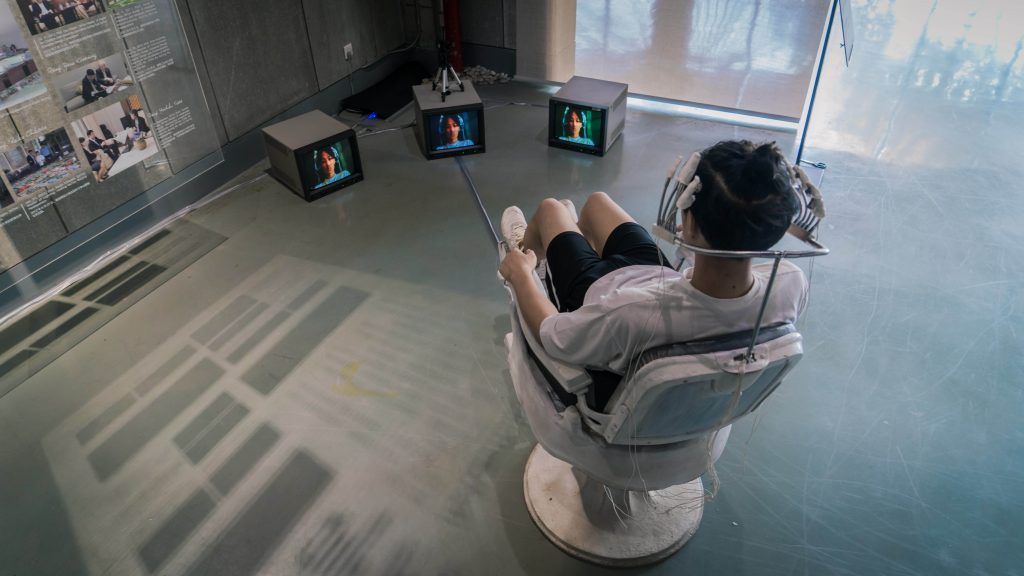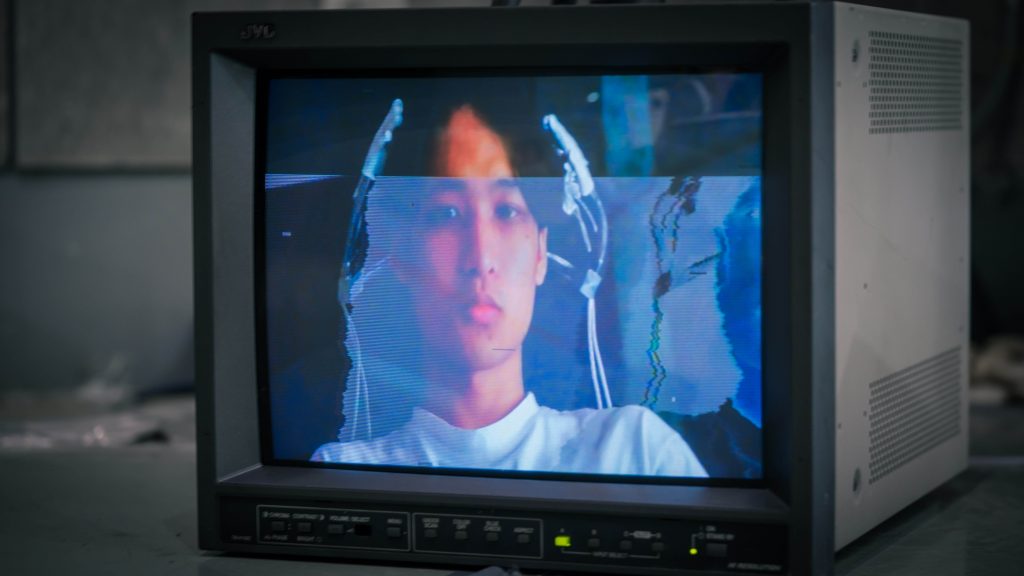

Self-Distortion interrogating the mediating effects of technology on identity construction. I intend to explore this process of technological (re) mediation in an artistic way that bring together eastern and western philosophy and neuroscience, using media archeology as a method of artistic practice, explore how technology mediates people’s perceived experience and thus affects the person’s identity.
In a secluded environment, three old monitors arc placed in front of vintage metal chairs. The back of the chair stretches out my ten ceramic fingers, ten fingers in contact with the viewer’s head using the hands of the artist as the interface between the brain and the computer. The face of the audience sitting in a chair is captured by a camera, and the image is projected on the old monitor in real time, resulting in glitch. According to the meditation state reflected by the viewer’s brain pattern, the glitch image on the monitor will gradually become clear or unrecognizable. Transforming the brainwaves of the audience into real-time sound waves, and use bone conduction technology to directly make the audience hear their own meditative sounds. This environment is not only aesthetic but also scientific. This produces a new type of sensory experience around personal brainwave observation.
《自我失真》询问技术对身份建构的中介作用。通过以艺术方式 探索(再)中介的研究过程,来探索人类对自我身份的认知;使用媒体考古学作为艺术实践的方法论,联系东西方宗教哲学与神经科学,探寻身份在意识与媒介中的流动性, 以作品对后人类未来进行抗争。
在一个幽静的环境下,三个旧显示器弧形摆放在老式金属椅子面前,椅子靠背延伸出了我的十个陶瓷手指。十个手指与观众的头部相接触,以艺术家的双手作为大脑与机器连接的接口。坐在椅子上的观众面部被正对着的摄像头捕捉,影像实时投射在旧显示器上,并产生故障的效果。根据观众的大脑模式所反映出的冥想状态,显示器的故障影像也会随之逐渐变得清晰或者无法辨识。将观众的脑波实时的转化为对应频率的声波,并通过骨传导技术直接使观众听到自己冥想的声音,这产生了围绕个人脑波观察的新型感官体验。
Acknowledgments
